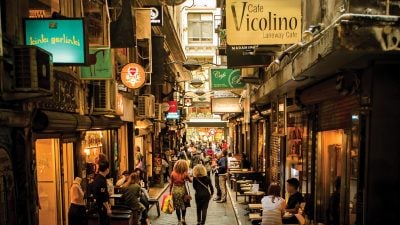Home / UK & Europe / Italy / Journey through the Ancient Ro…

Journey through the Ancient Roman Empire on Italy Vacations
In many parts of the world, you’re lucky enough to find a 200-year-old building, let alone a 2,000-year-old one. But not in Italy. Italy is chockfull of ancient ruins and historical marvels that are the envy of the rest of the world. That’s a part of what makes Italy so magnificent. When you embark on Italy vacations, you’ll spot ancient Roman wonders still dominating the terrain as if only decades have passed instead of millennia. To be fair, no one is mistaking the Colosseum or the Pantheon for buildings of the late 20th century, but the fact that they’re there at all is remarkable and worth celebrating. An Italian vacation offers you a chance to journey through the ancient Roman Empire and see the marvels of ages past.
Ancient Wonders of Rome
Rome is ground zero for remnants of the ancient Roman Empire. The Italian capital is so packed with temples, ruins, and arches that you’ll find something ancient no matter where you go. The most famous of these ruins are centred on the Colosseum, the grandest ruin of them all and the city’s definitive symbol. Completed in 80AD during the Flavian Dynasty, the Colosseum is the world’s largest amphitheatre and one of the New Seven Wonders of the World. Back during the height of the Roman Empire, it could hold up top 65,000 spectators who’d come to see gladiator fights and other spectacles of violence and sport.
It’s likely that the Colosseum will be one of the first landmarks you head to when in Rome on Italy vacations. You can find people offering tours outside the Colosseum, but it’s best to book ahead in order to ensure you get an expert to tell you fascinating stories about the amphitheatre’s construction and the types of events that would take place within its stone walls. If you join one of our Rome tours, you can get access to the underground dungeons where gladiators would prepare for combat and even walk out onto the floor to experience a bit of the gladiatorial stage for yourself.

If you head northwest of the Colosseum, pass through the Arch of Titus, and continue a little ways, you’ll reach the Roman Forum, the former centre of the Roman Empire. During the empire’s height, the Forum held trials, speeches, and even elections. It was the main public forum for engaging in civic life. Then in the Middle Ages, it became a grazing field for cows, but the ruins were eventually excavated and it was transformed into the historical attraction that it is today. It requires a ticket to get into the Forum, which costs around 12 EUR, but you can buy a bundled ticket that also includes the Colosseum and Palatine Hill for reduced costs.
Just past the Roman Forum, you’ll find the Capitoline Hill, which is one of the Seven Hills of Rome. During the time of the empire, there were several buildings on the hill, but they were covered up by palaces in the Middle Ages and Renaissance and are no longer accessible today. Instead, you’ll find the Capitoline Museums, which showcase archaeological findings from the hill as well as a historical art collection.

If you head southwest of the Colosseum and pass the Arch of Constantine, you’ll reach Palatine Hill, the most important of the Seven Hills of Rome. Located 40m above the Roman Forum and the Circus Maximus, Palatine Hill was home to some of the most important Roman palaces during the time of the empire. (Interestingly, the hill’s name is the origin for the word “palace” within several European languages.) The chief ruin on Palatine Hill is the Palace of Domitian, but you’ll also find several temples, gardens, and palaces of other emperors throughout the large complex of ruins.
Beyond the Palatine Hill to the southwest, you’ll find the Circus Maximus, which used to be the other major entertainment venue during the time of the empire. It was the empire’s largest stadium and would host chariot races as well as other competitions. Today, all that remains of the stadium is the dirt track and few walls and towers, but it doesn’t take much to imagine chariots racing down the length of the field and crowds of adoring fans watching from the stands.
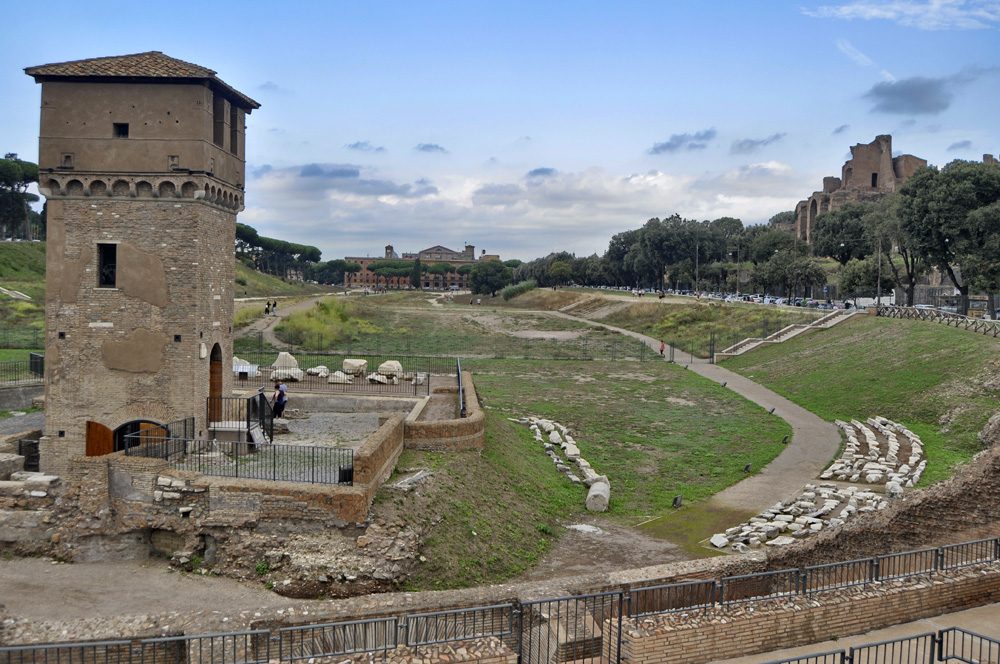
The City’s Other Ancient Sites
There are so many ancient ruins surrounding the Colosseum and the Roman Forum that you could easily spend a few days exploring these sites alone on Italy vacations. However, Rome is packed with ancient buildings and ruins elsewhere, so you ought to spread out and see at least a spattering of other ancient sites during your time in the city.
Aside from the Colosseum and its surrounding ruins, the Pantheon is likely the most famous ancient site in the city of Rome. The building was completed by Emperor Hadrian around 126AD and served as a temple dedicated to the pantheon of Roman gods. When the Roman Empire converted to Christianity, the building became a church.
Today, the Pantheon is the property of the government and attracts over 6 million visitors a year. It’s free to visit, although a guided tour will cost you (again, consider hiring a professional guide ahead of time instead one of the guides who hang out in the square outside). When you visit, you’ll notice that the building has a massive dome that’s not propped up by beams or scaffolding; it remains the largest unsupported concrete dome in the world. As well, the building remains in a remarkable state of preservation. It was constructed of Roman concrete and has survived the wear and tear of time. In fact, historians and archaeologists are unsure of the composition of Roman concrete and continue to be puzzled as to how ancient Romans made such a hearty construction material.
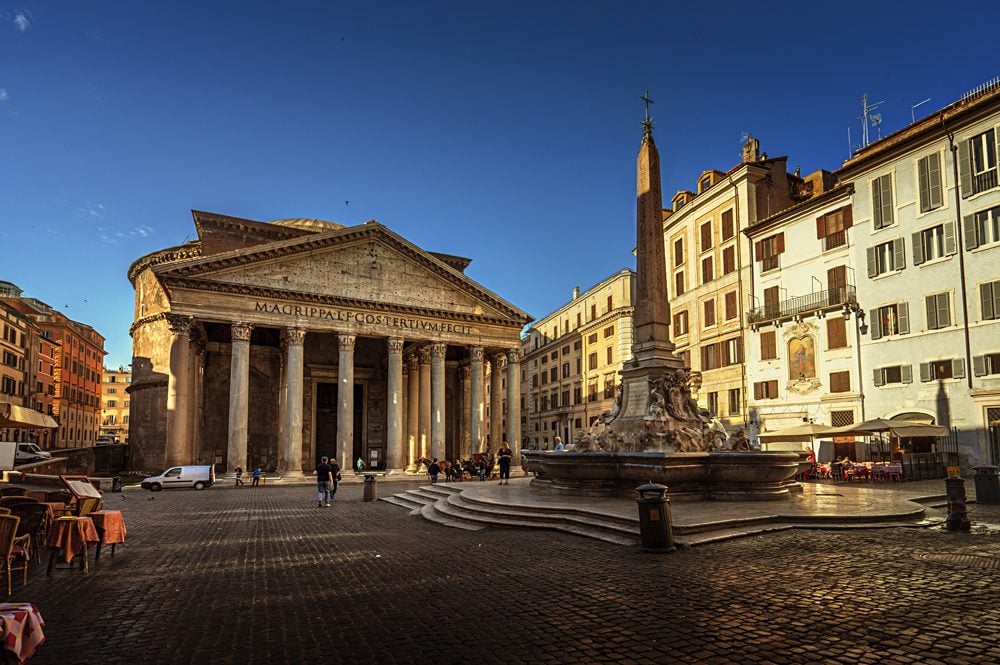
A bit to the northwest across the Tiber River from the Pantheon you’ll find Castel Sant’Angelo. While most people assume that the Castel Sant’Angelo is a Renaissance building due to its association with the Popes, it’s actually a building of the ancient Roman Empire. Like the Pantheon, the castle was constructed by the Emperor Hadrian as a mausoleum in the 2nd century. After the empire fell, the building passed through many hands until the Vatican converted it into a papal castle in the 14th century. The building protected the Pope during the sieges of the 16th century and even became a prison for religious prisoners. It costs 10.50 EUR to visit the castle and explore its five floors, which are all connected by a spiral ramp. You can see cells where figures like the scientist Giordano Bruno were imprisoned, and visit the upper terrace for a good vantage point over the city.
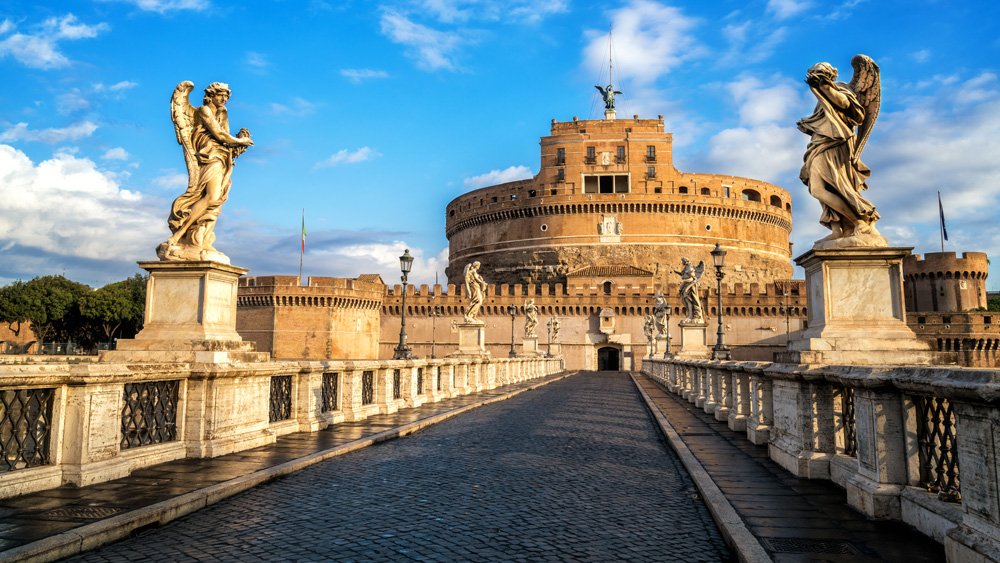
You should visit the Catacombs if you’re interested in Christianity under the Roman Empire, or enjoy a good underground adventure. These ancient burial sites built in the 2nd century were popular with Christians and Jews living in the Roman Empire, as they favoured burial, while the standard Roman practice was cremation. However, Christians and Jews were forbidden from burying their dead within city limits, so they chose Catacombs that were on the city outskirts (although today, the Catacombs are firmly within the city centre). The Christian Catacombs were the first site that archaeologists uncovered and the most popular of the many sites across the city. You’ll have to hire a guide or join a tour to see them, but they’re worth exploring for a glimpse at funerary practices in the empire.
There are many more ancient sites throughout Rome, but if we listed them all, this article would run book-length. However, it’s worth highlighting a few more spots off the beaten path for regular tourists on Italy vacations. Right near the Colosseum, you’ll find the Ludus Magnus, a gladiator school built at the end of the 1st century. If you’re particularly interested in the history of gladiators, it’s worth visiting. Speaking of the Colosseum, if you’re enamoured by Roman amphitheatres, you should visit the Theatre of Marcellus, another large open-air theatre completed and inaugurated by the Emperor Augustus in 12BC. The theatre lies to the southwest of the Capitoline Hill and remains in good condition compared to many other theatres across the former empire.
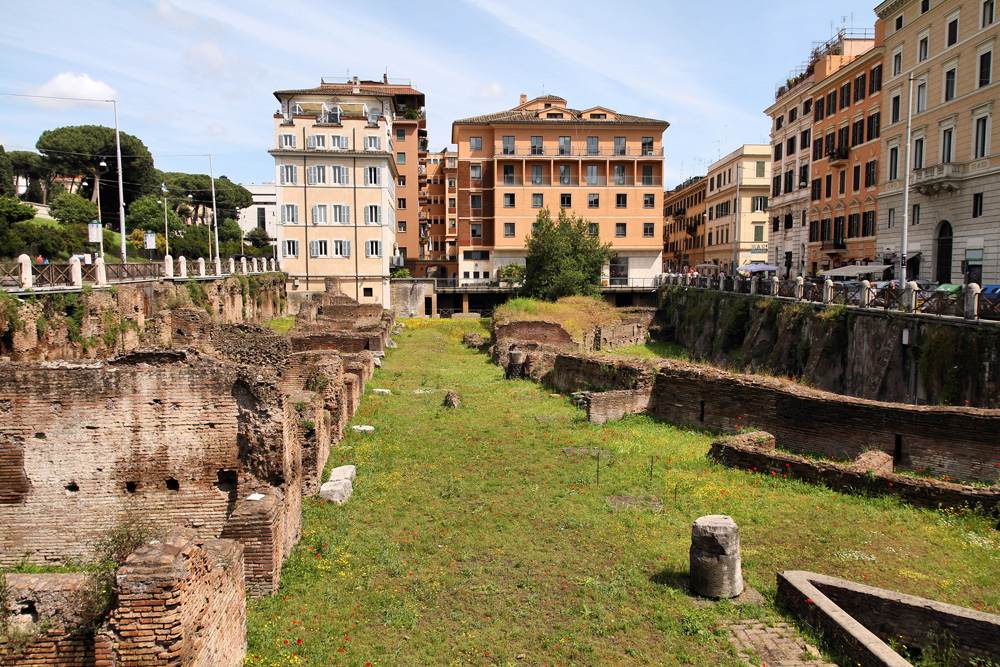
Outside of Rome
Rome has the lion’s share of ancient sites, but there are several other key Roman ruins worth visiting when you’re travelling across Italy. Pompeii is perhaps the most famous of these ruins outside the capital. Located on the Bay of Naples, the Roman city of Pompeii was engulfed in ash after the eruption of Mount Vesuvius in 79AD. The volcanic ash preserved the city and its citizens, so that when archaeologists began excavating the site, the walls, streets, and even bodies of the dead Romans were remarkably intact. While there are still several parts of the city that need excavation, Pompeii gives you a glimpse of a Roman city frozen in time. It’s a fascinating site.
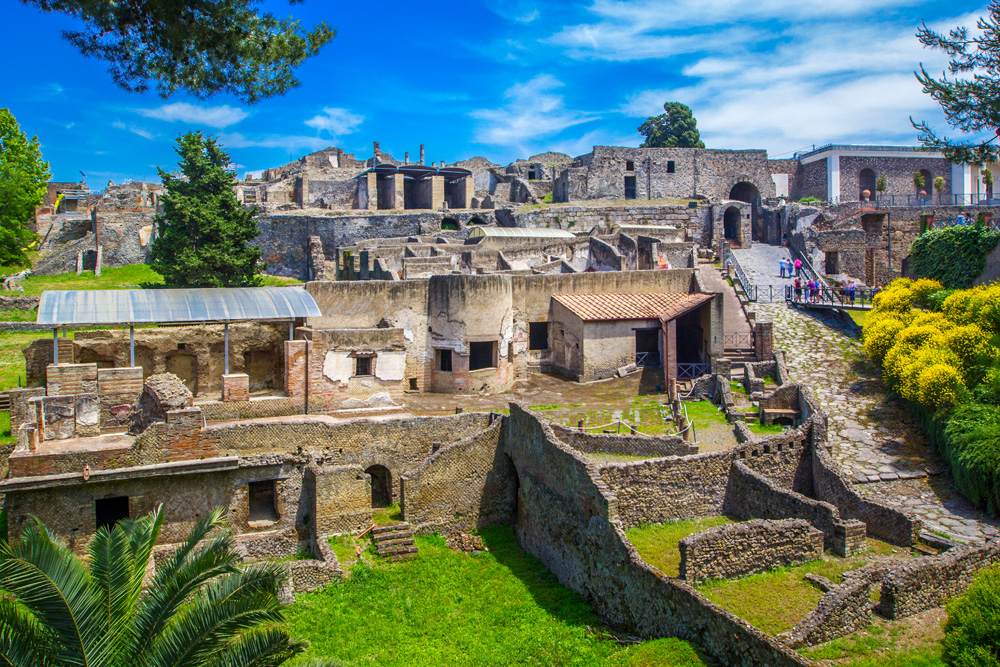
It’s also worth mentioning that if you’re in Northern Italy, you can head to Verona to see two ancient theatres that remain in excellent condition. The Arena di Verona is one of the largest Roman amphitheatres ever constructed and is one of the best-preserved Roman ruins in the entire country. The Arena is a popular spot for operas, so there’s a chance you could see a live musical performance set amongst the ancient Roman stones while visiting Verona. The city also has the Roman Theatre of Verona, which wasn’t a full amphitheatre but is still useable as a theatre today.
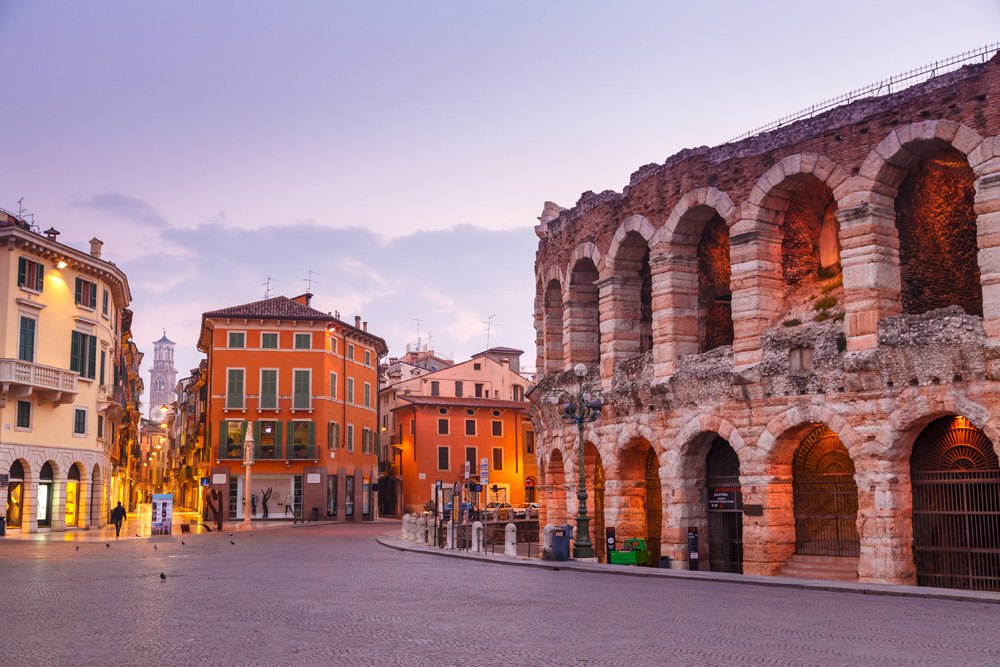
A journey across Western Europe, and Italy in particular, lets you travel back in time and explore the 2,000-year-old ruins of the Roman Empire. For many people, these ruins may just be old stones, but to globetrotters, they’re remnants of a fascinating past and an opportunity to engage with exciting stories of an ancient world.
Get more travel inspiration by email.
Subscribe
0 Comments

Get the latest travel trends & hear about the best deals on vacations around the world.
If you’re a Globetrotter, these are the newsletters for you!
